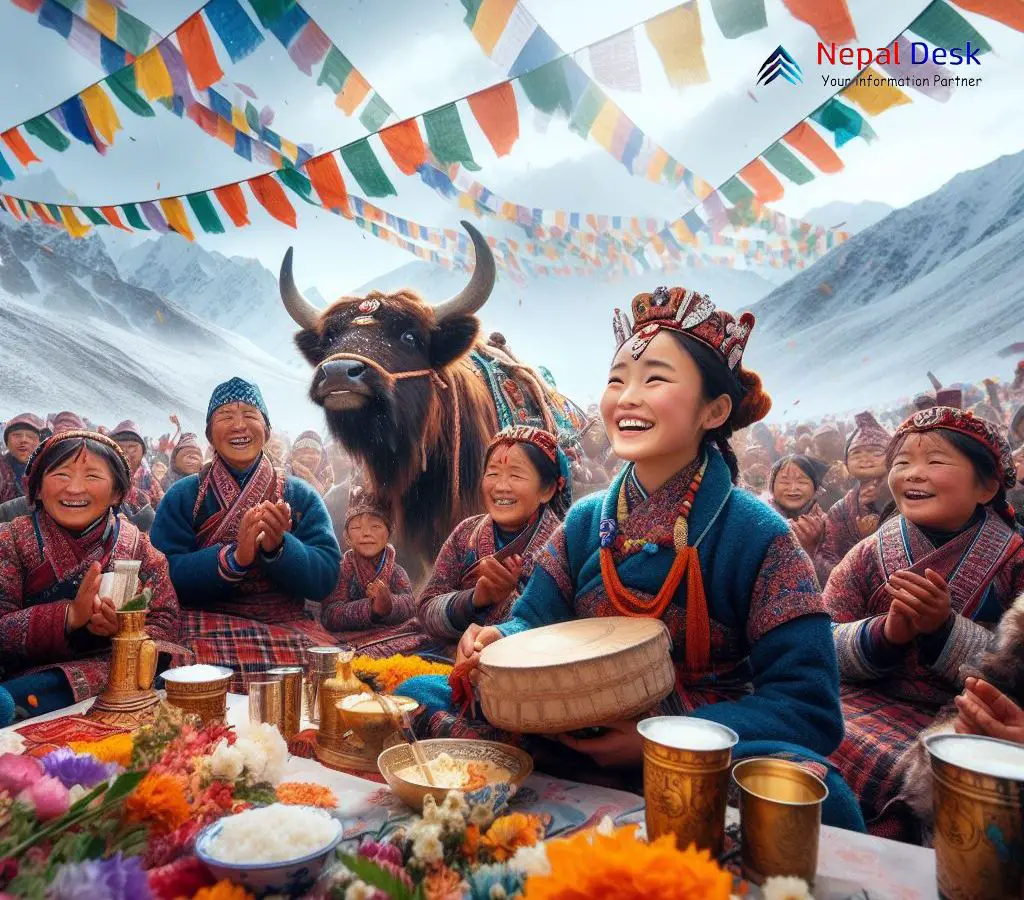Gyalpo Losar: Sherpa New Year Celebration Infuses Nepal with Joy
Published Date

Published Date
Explore Gyalpo Losar, the Sherpa New Year celebration, amidst Nepal's cultural mosaic, featuring traditional rituals, culinary delights, and unity.
⏱ 2 min read
Today, the Sherpa community has warmly embraced the advent of their new year with the festive celebration of Gyalpo Losar. In Nepal, a symphony of celebrations echoed throughout, as various indigenous groups, encompassing Tamang, Gurung, and Sherpa people, partook in Losar festivities—a cultural cornerstone of the nation.
The origins of Losar are steeped in culture and heritage, with its nomenclature borrowing from the Tibetan lexicon: "Lo" denoting year, and "Sar" meaning new. It heralds the beginning of a novel year or epoch as indicated by the unisolar Tibetan calendar.
In this cultural mosaic, Tamu Losar was observed with great mirth by the Gurung populace; concurrently, the Tamang society celebrated Sonam Lhosar, and Sherpas honored Gyalpo Losar. Each Lhosar festival bears distinct cultural ceremonies and traditional practices, mirroring Nepal's rich ethnic diversity.
Gyalpo Losar emerges as a vivacious celebration deeply rooted within Sherpa family traditions. Central to this festival is the enjoyment of a customary soup called Gutuk—a savory concoction composed of nine disparate types of wheat flour dough combined with rice, sweet potatoes, cheese, peas, green peppers, and radishes culminating in an aromatic stew.
With the arrival of the New Year, households engage in meticulous cleanness rituals and beautifying their domicile. As the celebration nears midnight, the felicitous expression "Tashi Delek" echoes through communities as kith and kin extend cordial felicitations to each other, signifying a communal ushering in of auspicious beginnings. People visit monasteries where offerings and homage are presented to monks. Firecrackers are lit to banish malevolent forces; meanwhile, traditional performances reenacting mythological skirmishes hold spectators spellbound.
Conviviality and banquets proliferate throughout this day; joy and conviviality fill the ambiance. Youth revel in this cheerful atmosphere—savoring sweets and receiving tokens of affection.
As dusk approaches, familial units congregate for a grand meal—a harbinger of unity and nascent starts. Despite modern influences permeating these traditions, the essence of Gyalpo Losar persists undiminished within Sherpa communities—emanating exuberance, delight, and a profound sense of rejuvenation.
